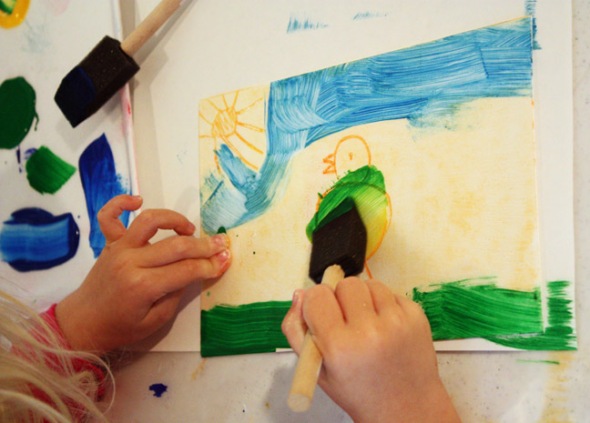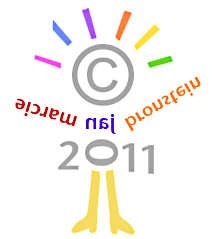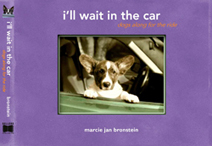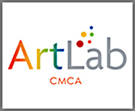a teen’s vision : filmmaker john loxterkamp
Posted: 11/11/2011 Filed under: art, artists, inspiration | Tags: artists, drawing, vision 5 Comments
For the past 16 years, I’ve lived with my family in a small town on the coast of Maine. Our community is filled with quirky, independent-minded, rather remarkable people, and my son (now 18 years old) is lucky to have grown up here, with these folks and their children as an extended family. One of those children is now also a high school senior, preparing to move to college, and out into the world. I’d like to introduce you to John Loxterkamp, who, as you will soon see, has a unique sense of visual style and wit, and a sophisticated ear for editing. What are the origins of John’s artistic vision? How did his early drawing skills inform his current work with video and typography?
When John was an eight year old child, I was struck by his highly stylized drawings. As I’ve written before, all children make remarkable things, and many make remarkable drawings. But there are children who are working at another level that really takes your breath away. Perhaps the most striking aspect of John’s work was his way of creating a sense of the passage of time… a rendering of cause and effect. This is no small thing, especially in a child’s work:
At some point, around the age of nine, John turned to video. He and my son made and edited movies for hours and hours, animating many an inanimate object:
From that point on, John made film after film, and at a certain point, his sensitivity as an editor and his innovative use of graphics came to the fore. The lyric video below was created by him this summer. Enjoy this excellent creation, and read through to the bottom of the post for my interview with John Loxterkamp.
Your drawings were always distinctive. Have you drawn continuously since you were a child, or have there been times when you’ve taken a break?
I’ve been drawing for as long as I can remember, and there have been slow periods where I haven’t drawn as much or as frequently, but I can’t remember ever taking a break from it completely.
What do you love about the video/film medium?
What I love most about film as a medium is that it allows one to tell a story with unlimited methods of doing so, through shots, scores, how the video is edited, etc. I also love the problem-solving aspect of film making. Throughout my history of videography, there’s always been a point during either production or post production where something doesn’t work, either continuity-wise or sound-wise or shot-wise. It is the duty of the filmmaker, especially one who is in charge of most of the aspects of production, to somehow solve or alleviate whatever problem it is. There are several ways of getting to a point where you’re satisfied with the final product and the imperfections are negligible. There’s no specific reason film is my medium of choice, except that I feel a strong passion for it and I am motivated to create short videos frequently, I do it for fun.
Tell us a bit about your Max video. What do you remember about the process of making of it?
Max, as far as I can remember, was a very short stop motion feature Noah and I made for fun; we always created when spending time together, and in this case we had a camera and a lot of time. Though the video was short, only about 6 seconds of stop motion total, I remember there was speculation about how many frames each picture we took should last on screen. At the time, I was all about the fluidity of motion and the final presentation, and suggested that if we made all of the pictures 3 frames long, the video would flow rather than assume a more choppy feel with the more standard 8-frames-per-photo look. It was also challenging to move everything in the shot around with relation to everything else, sometimes we would find ourselves confused as to what we had moved since the last frame and what we hadn’t. In the end, I’d say it was one of our more successful stop motion productions.
Which artists/filmmakers inspire you?
I’ve always been a fan of Wes Anderson. The way he sets up his shots as a Director is very unusual and captivating, and I’ve taken much from his use of lengthy still wide shots.
I know that you’ve found, through the internet, quite an extensive community of other teens making films. How do you think the immediate feedback (likes, repostings, votes) affects your work?
I really learn a lot from how others receive my work, and I learn to deal with the negative feedback I receive. I always pay attention to and encourage the posting of comments on my video because I really feel that constructive criticism from those who scrutinize my work will help me in the long run to improve my craft. I’ve learned some techniques from those making films around me, but I’ve never shaped a video of mine around a fellow content creator’s style.
Tell us about your fabulous Nashville Lyric Video.
Nashville was my first full lyric video, although I had been working with typography and music before. The main thing I learned from working on Nashville was how to budget my time and meet a deadline. Because the video was a commission, the artist’s manager gave me about a three-week period to complete the lyric video, and that turned out to be a very short amount of time. I was working 6 or 7 hours straight some weekends putting the video together, and I had to prioritize; I would stay in rather than hang out with my friends some nights, and I would close out all other distractions to get the project done. It was a learning experience, I’ve never had to do something so time-consuming and intensive.
What are you working on these days? Are you open to taking commissions?!
Right now I’m starting to get back into film, but I have one typography project I’m working on at the moment, which will probably take me about a month to complete. I am always open to commissions!
BRAVO JOHN!
fotoplay for you : complete the zebra
Posted: 11/03/2011 Filed under: collaboration, drawing, fotoplay, photography | Tags: collaboration, drawing, fotoplay, photography 1 Comment
I’m pleased to offer you the first of many free fotoplay pages! Feel free to print it out for your children, your students, or yourself. When the page is completed, you can email your work to me. I’m creating a gallery of work created by you, which will soon be on this site.
Also, keep an eye on the fotoplay pages link widget on my sidebar. This is where you’ll soon be able to access all of my free pages.
To download today’s “complete the zebra” page, click HERE.
I look forward to seeing your work!
{note: Sale or publication of fotoplay is prohibited without the written approval of M.J. Bronstein.}
fotoplay : images and hieroglyphs
Posted: 11/01/2011 Filed under: art, children, drawing, fotoplay, photography | Tags: drawing, fotoplay, photography, prompts, vision Leave a commentIt’s easy to be wowed by the variety of approaches that students have taken to complete my fotoplay pages. It’s also easy to love these “finished” pages for obvious reasons: they’re unpredictable, clever, imaginative, and very personal.
What might not be so obvious is what takes place while the pages are being completed: the process. Sometimes I’m able to literally watch or hear (some children talk while they draw) what goes on in the process of completing a page. But other times the creative choices (and the connections between them) are more elusive, private, and symbolic.
The page above was completed by an eight year old boy, who very quickly drew his animal in response to the line/leash. This is a deceptive little drawing. So many choices were made! : The scale of the dog; the careful connection of a new (but similar) leash to the one I drew; the direction the dog faces…
The five year old girl who completed this page spent a lot of time interacting with the letters in the words at the top of the page. Back and forth between the sun and the dog, she focused on the words, the spaces between the words, and then the sentence as it’s own visual element.
The eight year old boy who completed this page created a full narrative, with another dog, a man, a far away landscape, a playground and a ball. The connection between the man in the background and the dog on the leash in the foreground is crystal clear.
The page above was created by a five year old girl who is one of my ArtLab students. Week after week I’ve been struck by her work and her repeated use of certain lines and shapes. Like many artists (young or old), she’s created her own alphabet of symbols, her own vocabulary: a personal iconography or system of hieroglyphs where marks made are words and sentences in a private story.
monoprinting : a point of departure
Posted: 10/26/2011 Filed under: art, art education, children, classes, drawing | Tags: drawing, painting Leave a commentYesterday at the ArtLab, my five year olds drew on styrofoam sheets with wooden styluses to make monoprints. While so many aspects of this process were completely new for all of the students (drawing on foam, rolling with a brayer, pressing the foam onto the paper, burnishing with the back of a spoon), I spent very little time explaining or demonstrating technique. We dove right into the work and the materials.
After the first prints were pressed, the children began asking for more colors beyond the orange we had mixed. And it wasn’t long before they realized that their monoprints were simply paintings they were transferring to another surface. Their focus shifted to the painting of the styrofoam sheet…
…then the addition of more colors…experimenting with different ways of holding the brush…
…investigation into the effect of pressing paint into those carved lines…
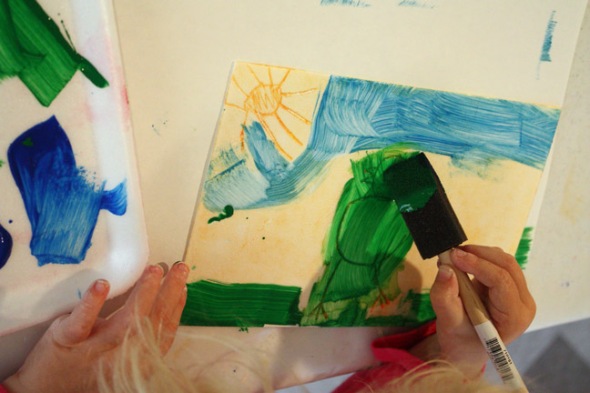
…until finally sponge brushes were traded for a carefully selected group of small paintbrushes.
At this point, it seemed clear that they were looking at the styrofoam sheets as “finished works.”
Each of these shifts in focus (refined choices) were initiated by the children, as they moved deeper and deeper into the process of making images by carving, exploring the materials, and coating the monoprint sheets. They themselves opened the doors to so many more projects: textural carved paintings, paintings created with different kinds of brushes, and of course, monoprint sheets that might not then make monoprints.
fotoplay : adults jump in
Posted: 10/24/2011 Filed under: drawing, fotoplay, inspiration, workshops | Tags: drawing, fotoplay, photography, prompts Leave a commentThe first thing the participants in Saturday’s workshop found when they came into the ArtLab was a fotoplay prompt. (Looking back at previous posts, I imagine that my love for creating visual prompts is by now clear!) The best part about what then happened, was what is usually the best part about “teaching” : It was I who learned something. What I had thought would be a basic ice-breaker at the beginning of the workshop, turned out to be one of the most loved parts of the day.
Not only did my workshop participants create beautiful, sweet, odd imagery, but they did so using a full spectrum of media: crayon, marker, watercolor, collage…
And then, for the first time ever, I worked on one of my own fotoplay pages. Honestly, in all the days of sharing this work with other people, of creating, printing, and giving out my pages, it never occurred to me to do one myself. I used a small foam stamp, one of the other exercises/projects we did that morning:
I’m really pleased that I did:
*Please note:
fotoplay is a trademark of the Marcie Jan Bronstein art studio.
Please email me if you’re interested in publishing this work for commercial purposes.












